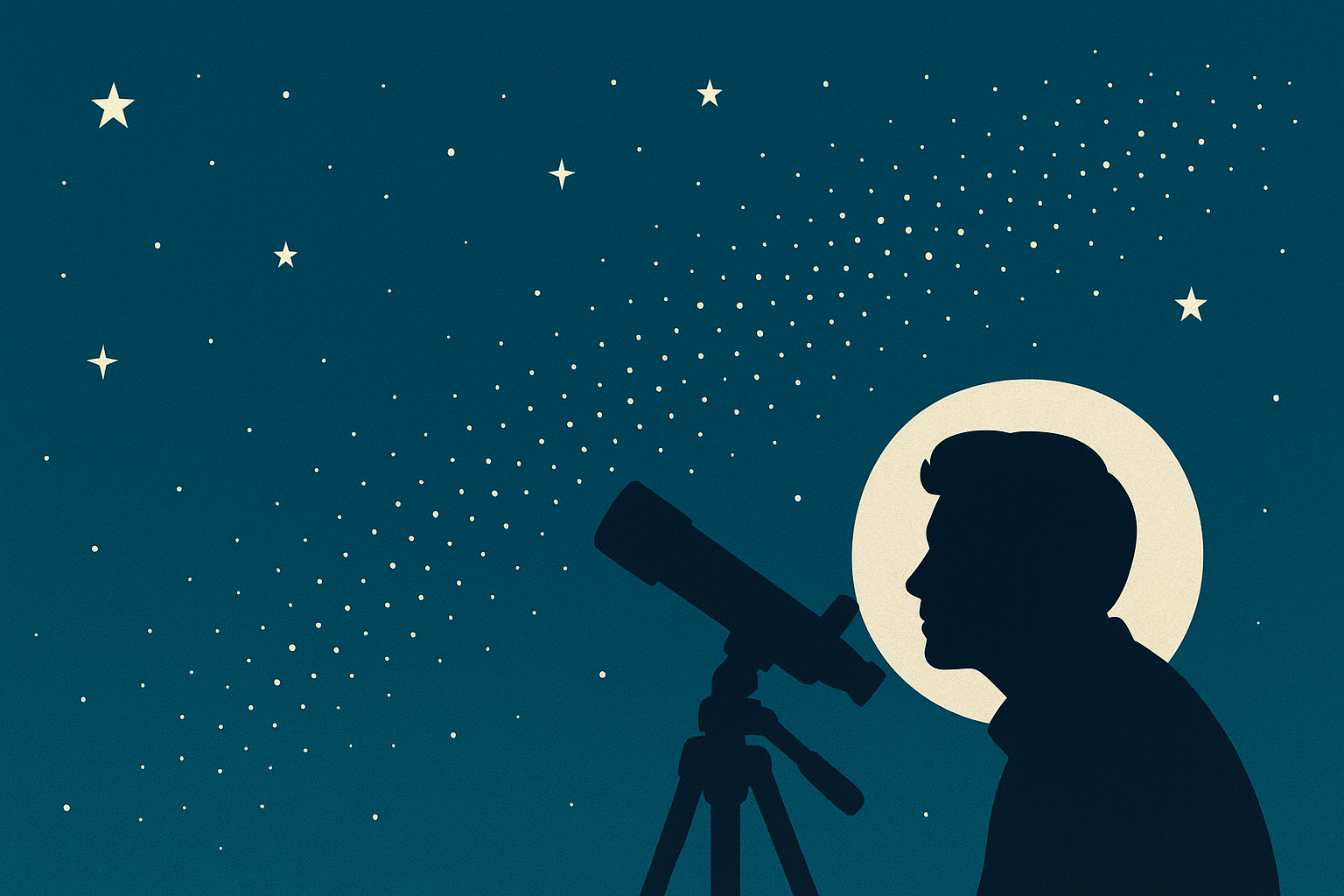From Austin Skies To West Texas
Written by prisha desai
Illustration by Prisha Desai
I meet so many astronomy enthusiasts on campus who want to engage with the subject without necessarily taking classes. I also share some of my own experiences as an astronomy major, but many of those opportunities are open to everyone - something a lot of people wish they had known earlier. This article is my way of recommending the different ways UT Austin makes astronomy accessible, in the hope that it might spark a new interest for you or simply give you a unique experience. After all, college is all about trying new things.
PMA and Painter Hall Star Parties
PMA Telescope (Photo by Prisha Desai) Painter Hall Telescope. Image Courtesy of UT Outreach
The Physics, Mathematics and Astronomy (PMA) and Painter Hall buildings come alive three nights a week as astronomy enthusiasts gather to view celestial objects through the rooftop telescopes. Star parties are held at PMA on Wednesdays from 8 to 10 p.m., and at Painter Hall on Fridays and Saturdays. Best of all, they’re completely free - and open to the public, not just UT students. If you’re going with a group of more than 15, the organizers recommend choosing PMA, since the telescope and rooftop space there are larger than at Painter. The events run throughout the fall and spring semesters (with breaks during holidays), and sometimes in the summer depending on conditions. I’ve been to the PMA star parties myself, and I can’t recommend them enough. The building may not be glamorous, but the rooftop more than makes up for it. From the very top you get a sweeping 360° view of the city and campus, with a nice breeze even on summer nights. There’s a dome that houses the 16-inch telescope, along with smaller portable telescopes set up outside. Students and staff from the astronomy department run the event, explaining what you’re seeing and operating the equipment. When I went, I got to see Saturn (honestly one of the most beautiful experiences of my life), the Moon, and even a comet. You’ll also spot physics and astronomy majors hanging out after long days in PMA, adding to the vibe. Just make sure to check the weather and event updates on their website before heading over—it can get cancelled if skies aren’t clear. You’ll find all the details here: https://outreach.as.utexas.edu/public/viewing.html. Whether you go with friends, family, or even for a date, it’s such a unique way to spend an evening. Even if astronomy isn’t ‘your thing,’ give it a shot - you won’t be disappointed.
McDonald Observatory
View from Harlan J. Smith Telescope at McDonald Observatory (Photos by Prisha Desai)
View from the Director’s House at the McDonald Observatory (Photo by Prisha Desai)
Before the name confuses you, let me clarify: the observatory is named after William Johnson McDonald, who left a significant part of his fortune to UT Austin for building this observatory in the Davis Mountains of West Texas. It’s about a 7-hour, beautiful drive from Austin, and from the observatory you can even see the Chihuahuan Desert. The pictures speak for themselves when it comes to showing how beautiful and transcendental this place is. For me, it’s a very special spot - a place close to my heart where I feel like I escape into a whole new world. Even the long nights of observing with my group (10–12 hours at a stretch to collect data) don’t feel tiring here, and I always end up meeting the coolest people. If you’re an astronomy student and haven’t been to the observatory yet, please reach out to me (prisha@utexas.edu) and I’ll guide you on how to get this opportunity. For non-astronomy students, you can plan a 3–5 day trip to cover McDonald Observatory, Big Bend National Park, Fort Davis, and Marfa.
Whenever I wear my Pleiades sweater (bought from the observatory visitor center’s gift shop) on campus, people often ask me where it’s from. Definitely check out their merch when you visit - they have some very cool stuff. You can also browse online here: McDonald Observatory Gift Shop. The observatory also offers guided tours of multiple telescopes, star parties, and viewing nights. You also get discounts if you book as a group. I once went to a viewing night and saw breathtaking nebulae, star clusters, and planets through their telescope. Here are some of the images I captured during those nights:
M15 Globular Cluster Saturn (with its 2 moons)
One of the coolest things about McDonald is that it’s part of the Big Bend Dark Sky Region - the largest light-pollution-protected area in the world. As a result, the sky is always covered with stars, and in summer you can even see the Milky Way Band. If you max out your phone’s exposure and night mode settings and take a photo of the night sky, this is what you get (these are from my own phone camera):
The only on-site accommodation is the Astronomers’ Lodge. It’s simple but comfortable and cozy. Rooms are limited, with priority given to researchers, board members, and observers, so I’d recommend having backup options in Fort Davis (a short 20–30 min drive). Still, if you can, try staying at the Lodge - you’ll get the chance to interact with astronomers, and sometimes they’ll even give you behind-the-scenes access to the telescopes and their research work. While you’re there, don’t miss the Big Bend National Park and the nearby town of Marfa. Marfa is an artistic, quirky desert town with galleries, cafes, and restaurants - the perfect offbeat side quest. Just outside Marfa in Valentine, you’ll also find the iconic Prada Marfa art installation, which is worth a stop. For more details, check out: McDonald Observatory Visitors Page, Visit Marfa










